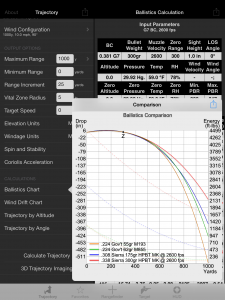Pro Tip: The Long-Range Zero
July 8th, 2019 by team

For decades, the standard distance for zeroing a centerfire rifle was 100 yards. But with so many of today’s shooters going long range for hunting and competition, it would seem to make sense to zero your rifle at a great distance, like 200 yards or more. Right?
Not so, notes Curt Vaughn, veteran long-distance shooting competitor and Head of Product for Ballistic.
“Most competitive shooters still use the 100-yard zero,” says Vaughn. “The biggest reason? The math. With a 100 yard zero, your math for shooting long distance is so much simpler and straightforward.”

As Vaughn explains, 1 Minute of Angle (MOA) equals approximately one inch at 100 yards. Let’s say you and your rifle regularly shoot 1 MOA groups (or better) at 100 yards. That means your groups have a spread between shots of one inch. At 500 yards, then, you should be able to shoot a five-inch group, given 1 MOA for every 100 yards. At 1,000 yards, that translates to 10-inch or 10 MOA groups.
“With a 100-yard zero, there’s just that easy one-to-one correspondence,” says Vaughn. “You can figure it in your head.”
But if your zero is at 200-yards, 250-yards or 300-yards, and your target is at 725 yards? Now you must do some fancy calculating. That can take up some critical time during a match or a hunt.
The 100-yard zero is just as handy for hold-over points. You enter that 100-yard zero into Ballistic, as well as sight height and other Bullet Profile data, andBallistic instantly provides the MOA or MIL RAD holdover needed at every shooting distance.
Again, with easy-to-understand math. Let’s say your target is at 638 yards andBallistic calculates the hold over needed for your bullet at 12.4 MOA. You then either holdover your scopes reticle to the mark on the reticle’s vertical axis that corresponds with 12.4 MOA or you adjust your elevation turret up 12.4 MOA and hold the crosshair right on the target.
“I occasionally meet a competitive shooter using a 200- or 300-yard zero,” Vaughn adds. “But it’s very rare. And since so many of our country’s shooting ranges are set up with only 100-yard lanes, you often have to practice at this distance. So, your 100-yard zero is a really huge help in practice, too.”
However, even with a 100-yard zero, changing environmental conditions can and will change bullet drops, especially at longer distances. Before a day’s actual shooting, make sure you update environmental and other variables in Ballistic.That way, you will make every shot count.


Leave a Reply